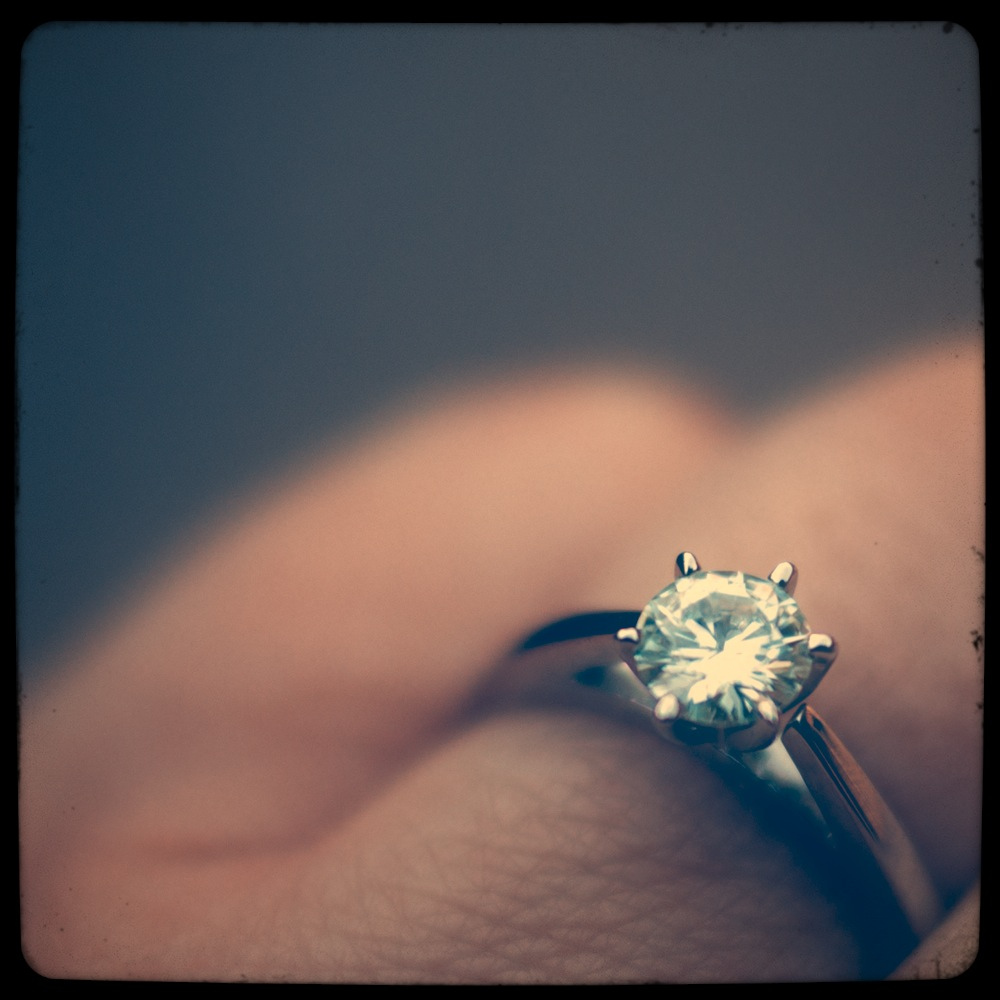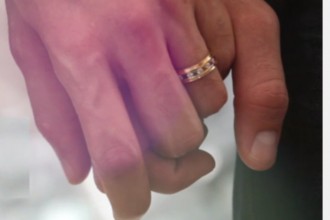When most people think about engagement rings, they automatically imagine a diamond ring. It seems like using diamonds is a tradition as old as time. But over the past few years, there has been a shift. People are starting to migrate to other options when it comes to engagement rings. Some blame cost, but others say there’s something deeper and more meaningful at work.
Moissanite, once regarded as little more than a diamond look-alike, is gaining recognition as a beautiful gemstone in its own right. Sought after for its dazzling fire, brilliance, and durability, this gemstone is growing rapidly in popularity. Its somewhat sudden growth begs the question – is price really the only motivating factor behind this surge in popularity?

The Somewhat Shady History of Diamonds
For more than 80 years, diamonds have outsold all other gemstones; but this was not always the case. Diamonds were, at one time, exceedingly scarce. In 1477, the Archduke Maximilian of Austria became engaged to of Mary of Burgundy by placing a diamond ring on her finger. It became the earliest well documented account of someone using a diamond as an engagement ring.
The move did influence some people in affluent social circles as well as wealthy people who wanted to appear associated with the aristocracy. But, for the masses, simple bands remained popular. While diamond rings were certainly something people knew about, they were primarily associated with royalty and the very wealthy.
Following the discovery of massive diamond deposits in South Africa at the end of the 19th century, diamonds became so common that their value was in danger of complete collapse. With so many diamonds ready to flood the market, the cost of diamonds would plummet, sending several mines into bankruptcy. A small clutch of mine owners knew they stood to lose everything and so they hatched a cunning plan.
In order to save their industry, these former competitors had to come together. They joined forced to create De Beers Consolidated Mines, Ltd., a company which has had a near complete monopoly on the world supply of diamonds for more than a century. De Beers was able to prevent disaster by stockpiling diamonds and selling them in strategic amounts to control prices.

The Manufactured Tradition of Diamond Engagement Rings
Even with their monopoly of the diamond market, De Beers still saw sales slowing down. This problem became especially problematic during the Great Depression of the 1930s. As people were struggling to find ways to keep food on the table, De Beers was trying to entice people into paying more for their diamonds.
In 1938 De Beers hired a Philadelphia advertising agency to create a campaign to boost sales of diamonds in the United States. The agency decided to focus on linking diamonds with emotion, and because diamonds weren’t worth much inherently, they also needed a way to discourage people from ever reselling them.
The campaign, best known for its catchphrase “A Diamond is Forever”, successfully used Hollywood celebrities and clever marketing to convince the American public that a diamond engagement ring was the only appropriate way to make a marriage proposal. This ad campaign was so successful that within a few decades marriage proposals were no longer considered complete without a diamond. To this day it is one of the most successful advertising campaigns of all time and caused the sale of diamonds to skyrocket.
Blood Diamonds Make the News
Diamond sales remained strong for most of the 20th century, however in the 1990s problems began to surface. Violent conflicts, funded by the sale of diamonds, were gaining worldwide attention. In the late 1990s and early 2000s, stories about diamond sales funding government coups and insurgencies were making headlines. These gems were dubbed Blood Diamonds and the gemstones began to be associated with unethical mining practices as well as being currency for insurgencies and civil war.
Consumers began to see that civil wars, violence, forced child labor, environmental degradation and shocking human rights abuses were linked to diamonds. As many as 3 million deaths have been attributed to conflict diamond mining, and at one point conflict diamonds made up an estimated 15% of diamonds traded.
In response, the UN Security Council passed several resolutions attempting to halt the sale of conflict diamonds, most notably the Kimberley Process Certification Scheme, which attempts to track diamonds from their origin. Unfortunately, diamonds are easy to smuggle across borders and the problems of corruption and bribery in many diamond producing countries still allow conflict diamonds to enter the market in disturbing numbers.
As people became more aware of these problems, they became less likely to want to make diamonds a part of their own love story. Several companies now guarantee their diamonds to be conflict free. One of the largest and best known of these companies is Brilliant Earth, but these guarantees have been called into question.
In April 2017 a journalist released a series of bombshell videos casting serious doubt on Brilliant Earth’s claims. Some claims were found to be false but others highlighted legitimate problems within Brilliant Earth’s business. The expose also had the effect of further eroding consumer confidence in so-called ‘conflict free’ diamonds. While most companies genuinely make every attempt to ethically source diamonds, it’s rare that diamonds can be tracked back to their origin with 100% certainty. This makes it nearly impossible to have diamonds that anyone could say were 100% cruelty free.

The Search for a Dazzling Alternative
This growing awareness has led many people to seek alternatives to diamonds. There are colorless varieties of most transparent gemstones, such as sapphire, topaz and quartz, but without their color these gemstones can appear disappointingly dull compared to a diamond. While the color and clarity may be just as brilliant, there’s something lacking when it compared to the dazzle of a diamond.
A diamond gets its dazzle by the way it can bend, scatter and reflect light. When white light enters a diamond much of it is reflected back to the eye, and these flashes of white light are known as “brilliance”. Some of the light is broken up into distinct colors of the rainbow, and when these flashes of red, green, blue and orange are reflected back to the eye it is referred to as “fire”. Few gems can match the brilliance and fire of a diamond.
Another important feature of diamonds is their incredible hardness. Diamond is the hardest naturally occurring substance on earth, making it nearly impossible to scratch. This durability is another reason why diamonds are so popular. People know when they invest in a diamond, they are investing in something that can be dazzling today and for decades into the future. There are only two gemstones in use today which can match the diamond in fire and brilliance and nearly match it in hardness: Cubic Zirconia and Moissanite.
Cubic Zirconia vs. Moissanite – Which Gemstone Makes a Better Diamond?
Cubic zirconia, a low cost synthesized material similar in appearance to diamond, came onto the market in 1976. “CZ” is durable enough to be used in everyday jewelry, and its low cost and ease of manufacturing make it a popular and affordable diamond simulant. Though CZ is neither rare nor particularly valuable, it had virtually no competition until 1998, when moissanite was introduced to the market.
Naturally occurring moissanite was first discovered in 1893 by Dr. Henri Moissan, the man for which it was named. Found almost exclusively in meteorites, it is very rare and occurs only in small sizes. This rarity prevented moissanite from being used commercially until methods of artificially culturing it were discovered in the 20th century.
Today, synthetic moissanite is a dazzling gemstone. Its brilliance and fire can actually surpass that of a diamond, and its hardness is higher than any other gemstone used in jewelry today, second only to diamond. This not only prevents scratches, but allows for crisply cut facets and brilliant luster not possible with softer stones. This makes moissanite virtually indistinguishable from diamond to the untrained eye.
As a diamond simulant, moissanite is superior to CZ not only in hardness and beauty, but in that it more closely matches diamond in weight. CZ is nearly double the weight of diamond, meaning that a 1 carat CZ will be significantly smaller than a 1 carat diamond, while a one carat moissanite will be much closer in size.
While better in almost every way than CZ, the higher cost initially made moissanite less appealing to those looking only for a diamond imitation. However in recent years moissanite has gained in popularity with consumers searching for a diamond alternative that is not a low cost mass produced product.
Moissanite is significantly less expensive than diamond, and unlike CZ and diamonds, moissanite is actually rare. Gem-quality moissanite is cultured, cut and polished by only one company today, Charles & Colvard. This assures that, unlike diamonds, moissanite is guaranteed to be produced under sustainable, ethical conditions, and any moissanite you purchase will be of the highest quality.
Moissanite exceeds diamond in almost every way while costing only a fraction of the price, which has led many jewelers to no longer consider moissanite just a diamond simulant, but rather a valuable gemstone deserving its own place in today’s jewelry market. If you are a consumer who is considering buying a diamond but you are concerned about the ethics and artificially inflated value of diamonds, then moissanite should be at the top of your list.





